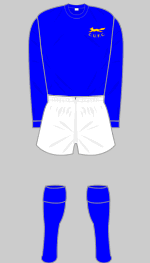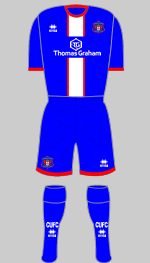

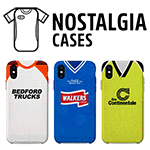

Carlisle
United
Formed 1896
Elected to Division Three (North) 1928. Relegated to the Conference 2004.
Promoted to League Two 2005.
Kit History
Shaddongate United
1896
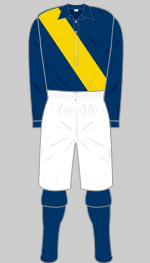
1897-1898 B
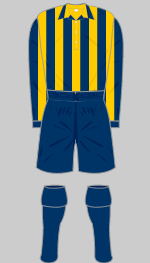
c1900-1902 A
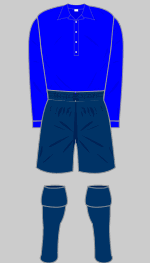
1902-1904 A
Carlisle United
1904

1904-1905 o A
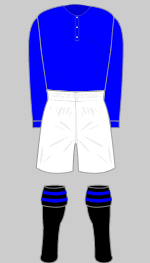
1906-1907 u

1907-1908 k

1914-1915 k
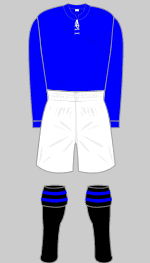
circa 1920 c
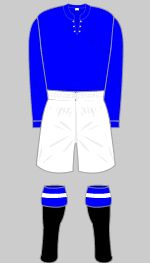
1931-1933 u
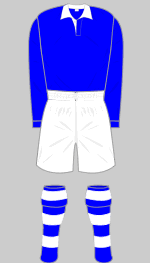
1933-1934 h
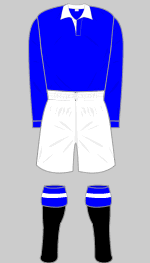
1934-1935 u
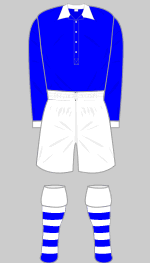
1935-1939 x E

1946-1947 b u w
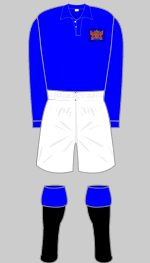
1947-1950 u
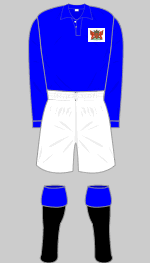
1950-1951 u
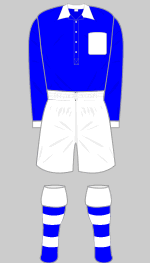
1952-1953 x
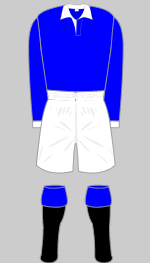
1953-1954 x
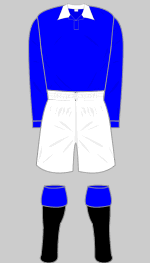
1954-1955 u
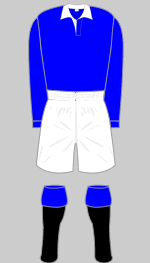
1955-1956 u

1957-1959 c j
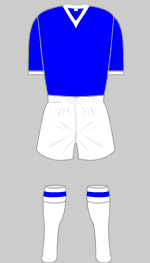
1959-1960 u

1961-1963 v F
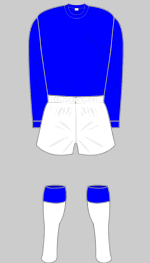
1963-1965 u

1965-1966 j u
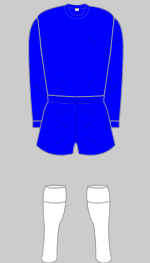
1966-1969 j F

1969-1970 j u
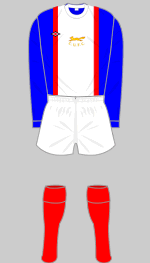
1973-1976 b f n
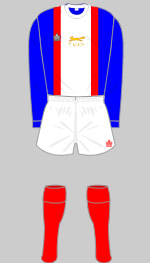
1976-1978 n
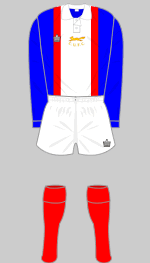
1978-1980 i n s

1980-1981 i n
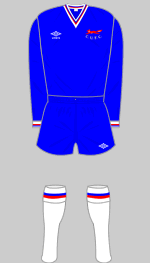
1981-1982 i

1982-1984 m D
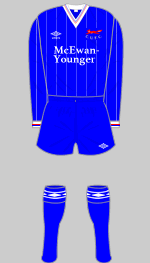
1984-1986 g D
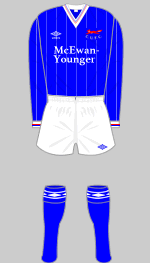
1986-August 1987 d

Sept 1987-1988 1 i y
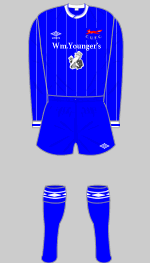
1987-1988 2 y

1988-1990 p t C
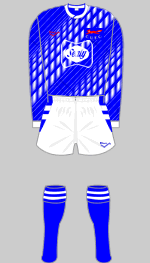
1990-1991 l m t
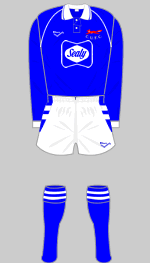
1991-1992 p
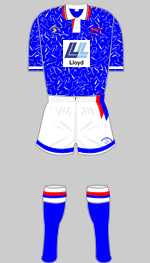
1992-1993 p q z
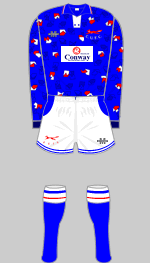
1993-1995 m q

1995-1997 f

1997-2000 f

2000-2002 f r
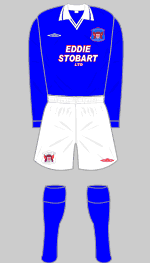
2002-2003 m
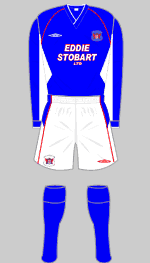
2003-2004 f m
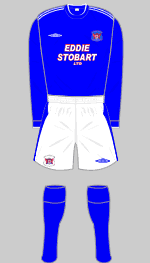
2004-2005 g
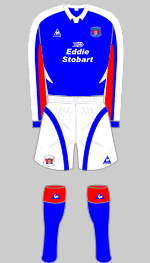
2005-2007 a q
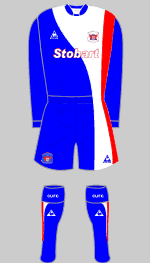
2007-2009 a
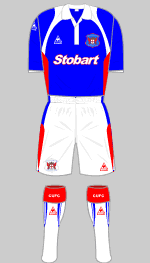
2009-2011 a
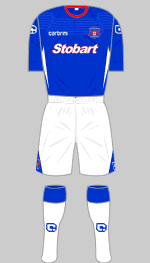
2011-2012 a
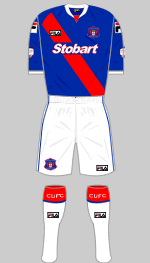
2012-2013 a
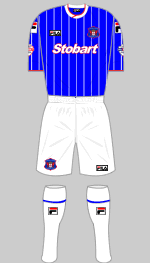
2013-2014 a
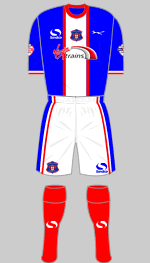
2014-2015 a
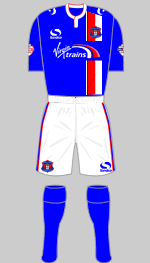
2015-2016 a
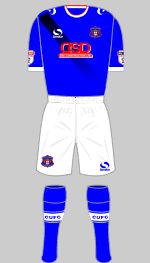
2016-2017 a
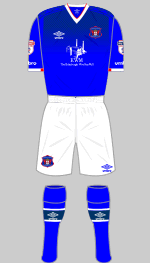
2017-2018 a
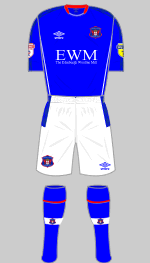
2018-2019 a
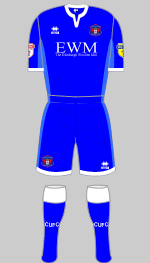
2019-2020 a
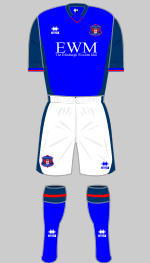
2020-2021 a
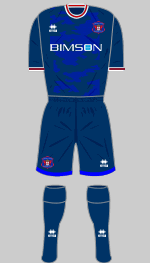
2022-2023 a
Background
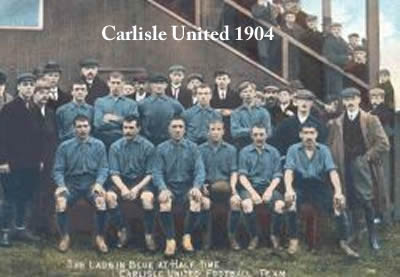 Association football
had been played in Carlisle since the 1880s, Carlisle Association and Red Rose being the leading teams. In 1896, Shaddongate United were formed in the industrial part of the town, dominated by cotton mills and textile factories. It was not long before the 'Gate were challenging for pre-eminence, a process that accelerated in 1899 when Carlisle Association went out of business.
Association football
had been played in Carlisle since the 1880s, Carlisle Association and Red Rose being the leading teams. In 1896, Shaddongate United were formed in the industrial part of the town, dominated by cotton mills and textile factories. It was not long before the 'Gate were challenging for pre-eminence, a process that accelerated in 1899 when Carlisle Association went out of business.
In 1904 Shaddongate were stripped of the Cumberland Senior League Title following a dispute over postponed matches. At a heated annual general meeting it was eventually agreed to make a fresh start. The club's name was changed to attract wider support. An application to join the Northern Alliance was rejected but the club's officials were determined to look beyond the confines of Cumberland for the future.
In 1905, Carlisle joined the Lancashire Combination but only after agreeing to pay all visiting teams’ expenses for two years, it having been pointed out that Carlisle was not in Lancashire. The club played at various grounds until they moved into Brunton Park in September 1909. At this time plans were laid to reorganise the Lancashire Combination on a regional basis: the committee thought this was not in the club’s interests and Carlisle joined the North Eastern League instead. The unfamiliar opponents did not inspire supporters: attendances declined and at one stage the players agreed to go without their wages to keep the club afloat but in May 1911, facing mounting debts and a deficit of £285 incurred over the previous season, the directors wound up the club. By August the club had been reconstituted on a membership basis rather than as a limited company and rejoined the North Eastern League.
The club’s fortunes improved after the Great
War. A new limited company was formed and in 1922, United won the North
Eastern League championship. In 1928, after a good FA Cup run and runners-up
position in the League, Carlisle were elected to the Football League at
the expense of Durham City. Apart from a poor 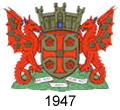 season in 1934-35, which
ended with re-election, Carlisle were a solid mid-table side.
season in 1934-35, which
ended with re-election, Carlisle were a solid mid-table side.
The first evidence we have of Carlisle wearing a crest comes from the 1947-50 seasons, when the town's coat of arms was worn on a dark patch. In 1950-51, this device was sewn onto a white patch.
In 1951 the young Bill Shankly, in his first managerial
post, had a brief spell at Carlisle, guiding them to third place in the
League. After being placed in the Fourth Division in 1958, Carlisle won
their first ever promotion in 1962, although they were relegated the following
season. The appointment of Alan Ashman as manager in 1963 marked the beginning
of a dramatic rise through the 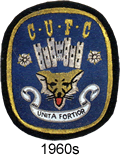 divisions. Two successive championships
(1964 and 1965) were followed by promotion to Division One in 1974. According
to Bill Shankly, it was “the greatest feat in the history of the
game.”
divisions. Two successive championships
(1964 and 1965) were followed by promotion to Division One in 1974. According
to Bill Shankly, it was “the greatest feat in the history of the
game.”
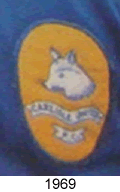 An official club crest emerged in the 1960s and while this appeared on blazers, programmes and stationary, it did not feature on the team shirts. When a shirt badge was added it consisted of a rather poorly drawn fox's head above the club's name embroidered onto scrolls appeariing out of a lozenge.
An official club crest emerged in the 1960s and while this appeared on blazers, programmes and stationary, it did not feature on the team shirts. When a shirt badge was added it consisted of a rather poorly drawn fox's head above the club's name embroidered onto scrolls appeariing out of a lozenge.
In 1970, the Carlisle team adopted an iconic new crest, a running fox (the club was known at the time as "The Foxes", after the connection with Cumbria's most famous  huntsman, John Peel - as in D'ye ken...). This appeared in gold between 1970 and 1981, after which it was rendered in red and white against a blue background.
huntsman, John Peel - as in D'ye ken...). This appeared in gold between 1970 and 1981, after which it was rendered in red and white against a blue background.
Wearing a smart new strip featuring a white panel
trimmed with red, Carlisle played in the First Division in 1974-7, briefly topping the League in August. They
struggled for the rest of the season and were relegated. Two years
later they were back in the Third Division but enjoyed something of a
revival under Bob Stokoe, who took them back into the Second Division
in 1982 and within a  whisker of promotion back to the top in 1984. Decline
followed and in 1987, Carlisle were in the Fourth Division, struggling
to avoid relegation to the Conference.
whisker of promotion back to the top in 1984. Decline
followed and in 1987, Carlisle were in the Fourth Division, struggling
to avoid relegation to the Conference.
In 1992, United finished bottom and would have
gone out of the League had Aldershot not resigned. Three years later, they they
were champions of Nationwide Division Three (the old Fourth Division)
and seemed to be on the rise once more. For the new season 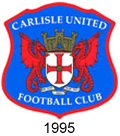 (1995-96) they adopted a new crest, based on the town's coat of arms, to replace the runnning fox.
(1995-96) they adopted a new crest, based on the town's coat of arms, to replace the runnning fox.
Relegated in controversial circumstances in 1996, they were promoted back to Nationwide Division Two the following season and also won the Auto Windscreens Shield at Wembley. As in previous years, Carlisle started the following season as strong favourites to win promotion only to wind up being relegated.
In 1999, Carlisle created a piece of football folklore when they avoided relegation to the Conference in remarkable fashion. Needing to win to avoid the drop, the score was 1-1 when Carlisle’s on-loan goalkeeper, Jimmy Glass, sprinted to the other end for a corner and struck the winning goal in the fifth minute of injury time to save the Cumberland side and consign Scarborough to the Conference.
The “Great Escape” proved a temporary reprieve. After struggling to avoid the drop for another five seasons, the inevitable happened in 2004 and Carlisle found themselves in the Conference. The change in status, as is often the case, provided a platform for the club to rebuild and they returned to the League via the play-offs after only one season, going on to win Coca Cola League Two in 2006.
In 2014 the Stobart Group withdrew its shirt sponsorship after a record 19 seasons. No explanation was offered although the transport company did state they would continue to support the club in other ways.
Sources
- (a) Carlisle United Official Website
- (b) Club Colours (Bob Bickerton)
- (c) Hull City FC - Images of Sport (C Elton)
- (d) Football Focus
- (e) Football Cards
- (f) empics
- (g) Kit Classics
- (h) The Football Encyclopaedia (Associated Sporting Press 1934) Information provided by Arthur Fergus
- (i) Ralph Pomeroy
- (j) Pete's Picture Palace
- (k) Three Games in Hand
- (l) Aldershot Has It
- (m) David King
- (n) Alick Milne
- (o) Tullie House Museum
- (p) Colour photo - source unknown
- (q) Kris Foster
- (r) Linden Clarke
- (s) Steve Browne
- (t) Gary Wilson
- (u) Keith Ellis (HFK Research Associate)
- (v) Terry Morley
- (w) Christopher Worrall
- (x) Simon Monks
- (y) Anthony Borrett
- (z) Old Football Shirts
- (A) "The 'Gate - A History of Shaddongate United FC" - Jon Tait (2017)
- (B) News & Star submitted by Nigel Lane
- (C) Dan MacLennan
- (D) Greger Lindberg
- (E) Peter Stevenson
- (F) The Senior Tigers Club
Crests are the property of Carlisle United FC.
